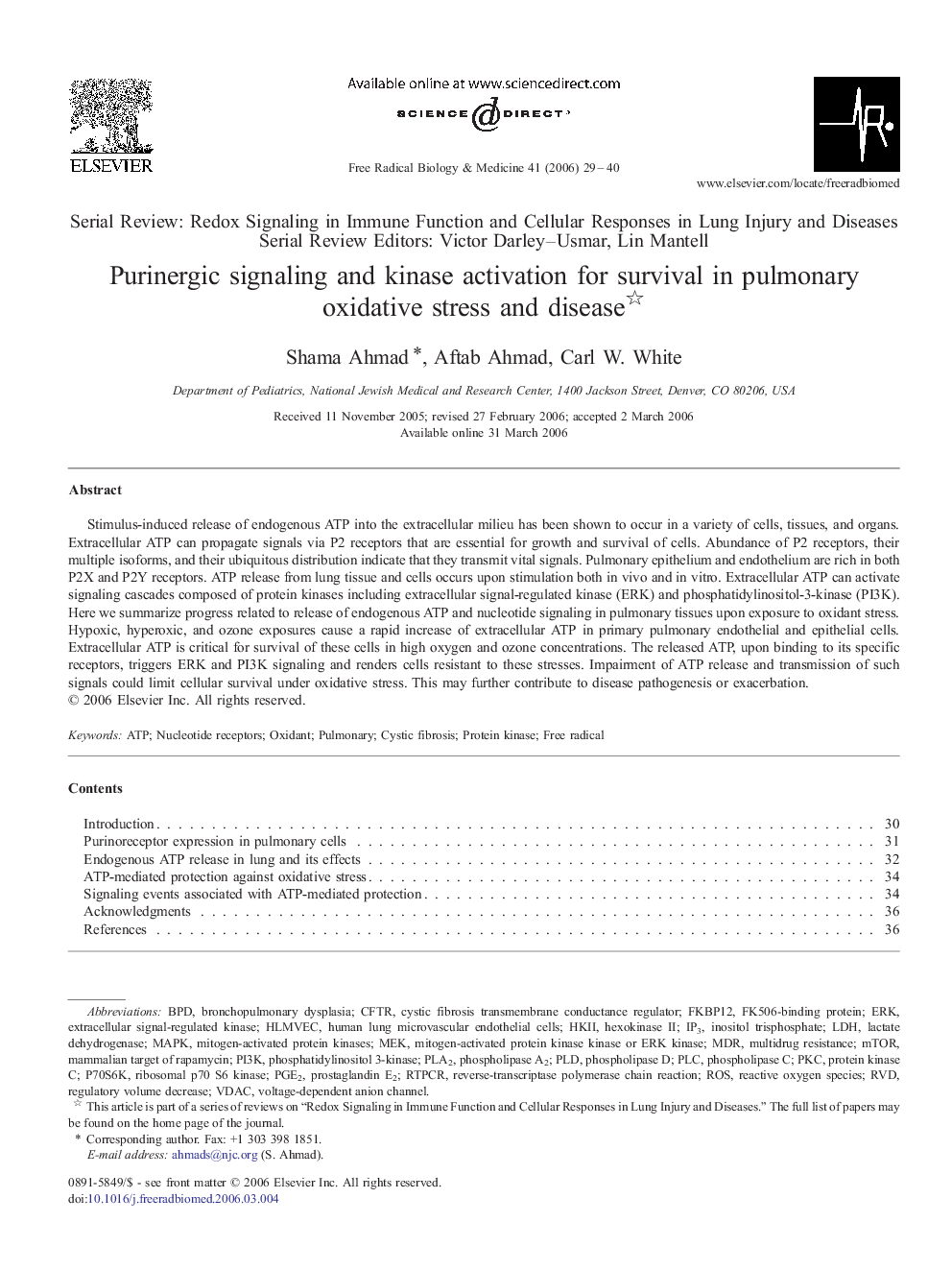| Article ID | Journal | Published Year | Pages | File Type |
|---|---|---|---|---|
| 1911890 | Free Radical Biology and Medicine | 2006 | 12 Pages |
Stimulus-induced release of endogenous ATP into the extracellular milieu has been shown to occur in a variety of cells, tissues, and organs. Extracellular ATP can propagate signals via P2 receptors that are essential for growth and survival of cells. Abundance of P2 receptors, their multiple isoforms, and their ubiquitous distribution indicate that they transmit vital signals. Pulmonary epithelium and endothelium are rich in both P2X and P2Y receptors. ATP release from lung tissue and cells occurs upon stimulation both in vivo and in vitro. Extracellular ATP can activate signaling cascades composed of protein kinases including extracellular signal-regulated kinase (ERK) and phosphatidylinositol-3-kinase (PI3K). Here we summarize progress related to release of endogenous ATP and nucleotide signaling in pulmonary tissues upon exposure to oxidant stress. Hypoxic, hyperoxic, and ozone exposures cause a rapid increase of extracellular ATP in primary pulmonary endothelial and epithelial cells. Extracellular ATP is critical for survival of these cells in high oxygen and ozone concentrations. The released ATP, upon binding to its specific receptors, triggers ERK and PI3K signaling and renders cells resistant to these stresses. Impairment of ATP release and transmission of such signals could limit cellular survival under oxidative stress. This may further contribute to disease pathogenesis or exacerbation.
